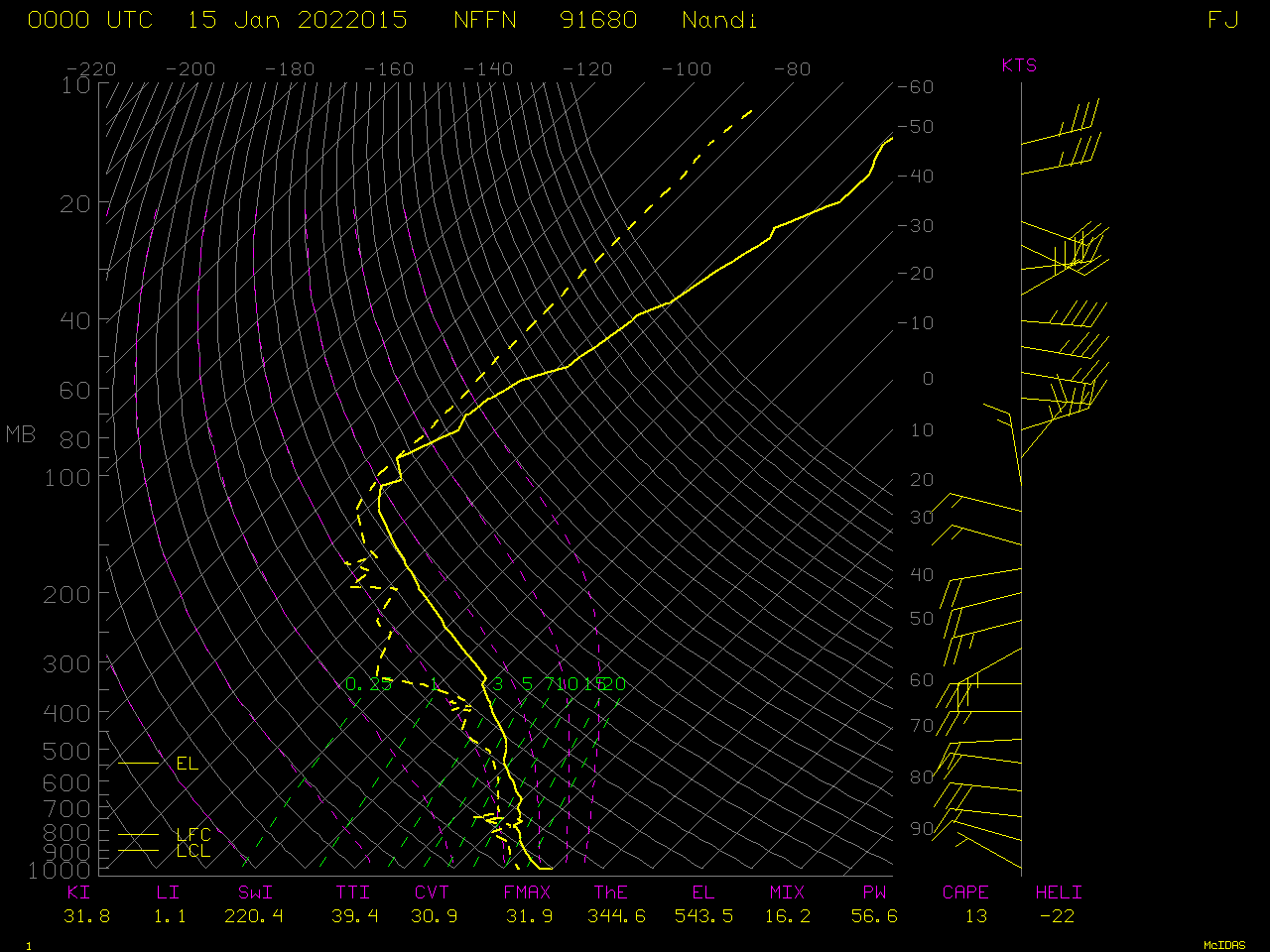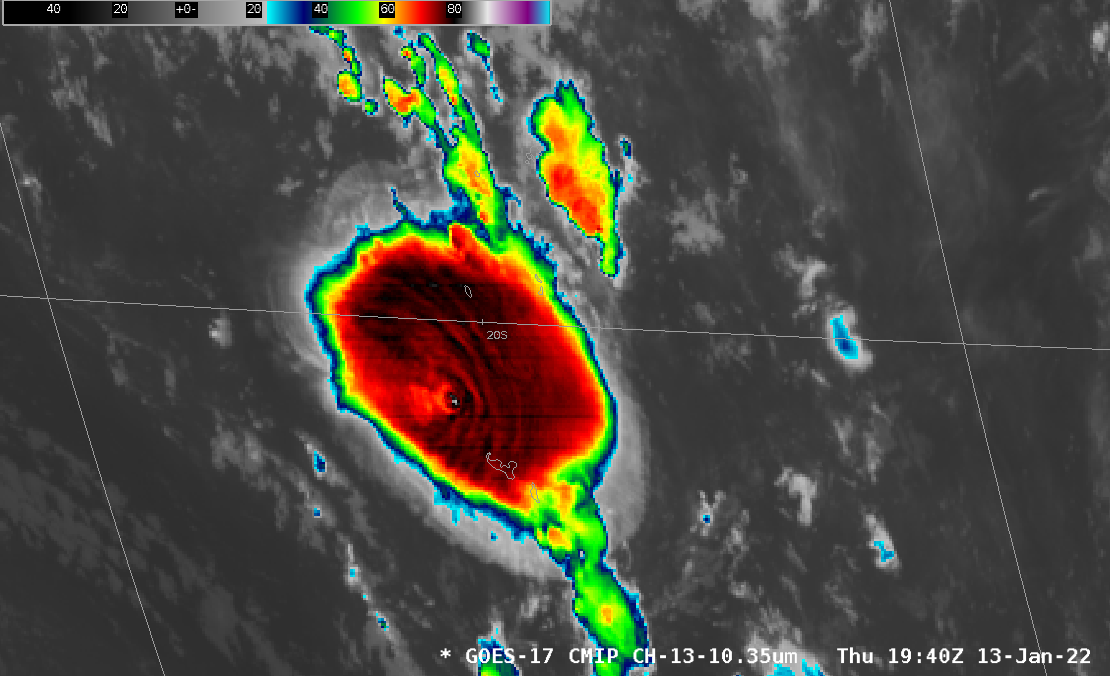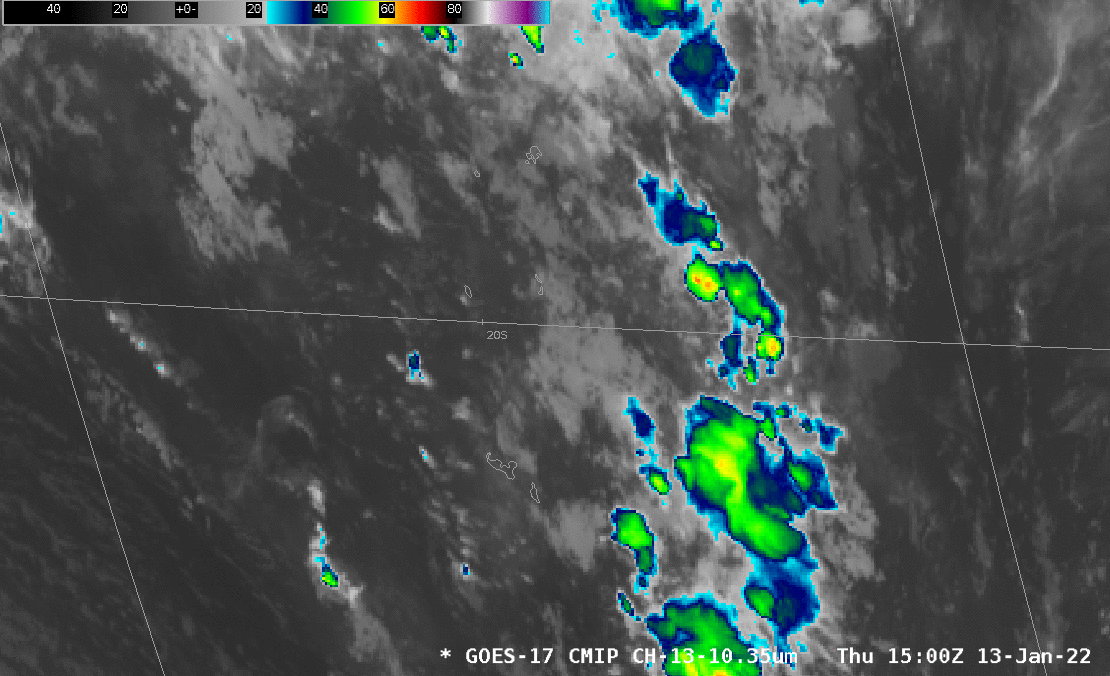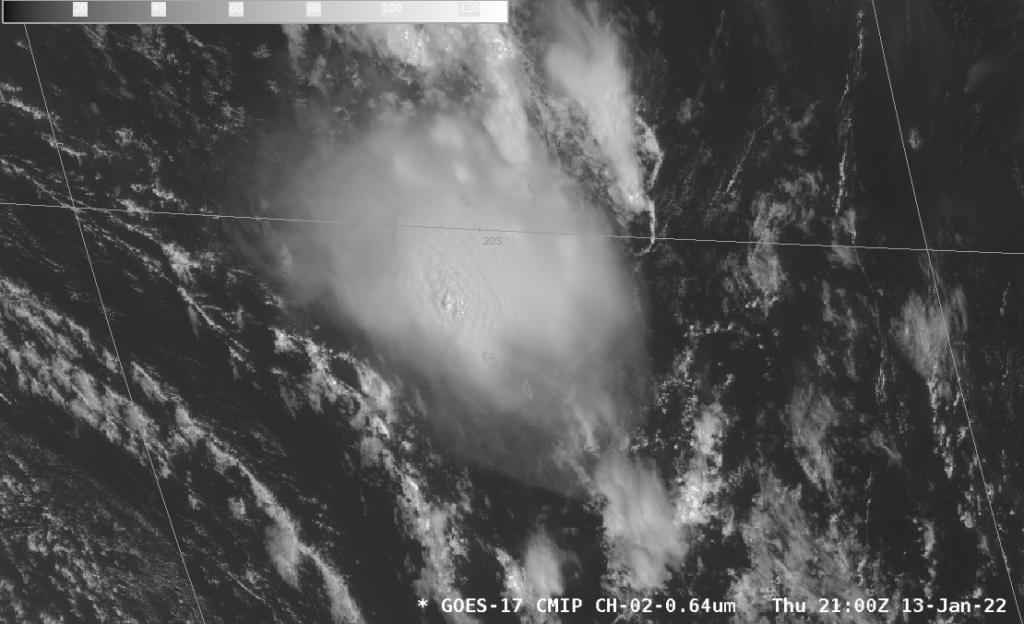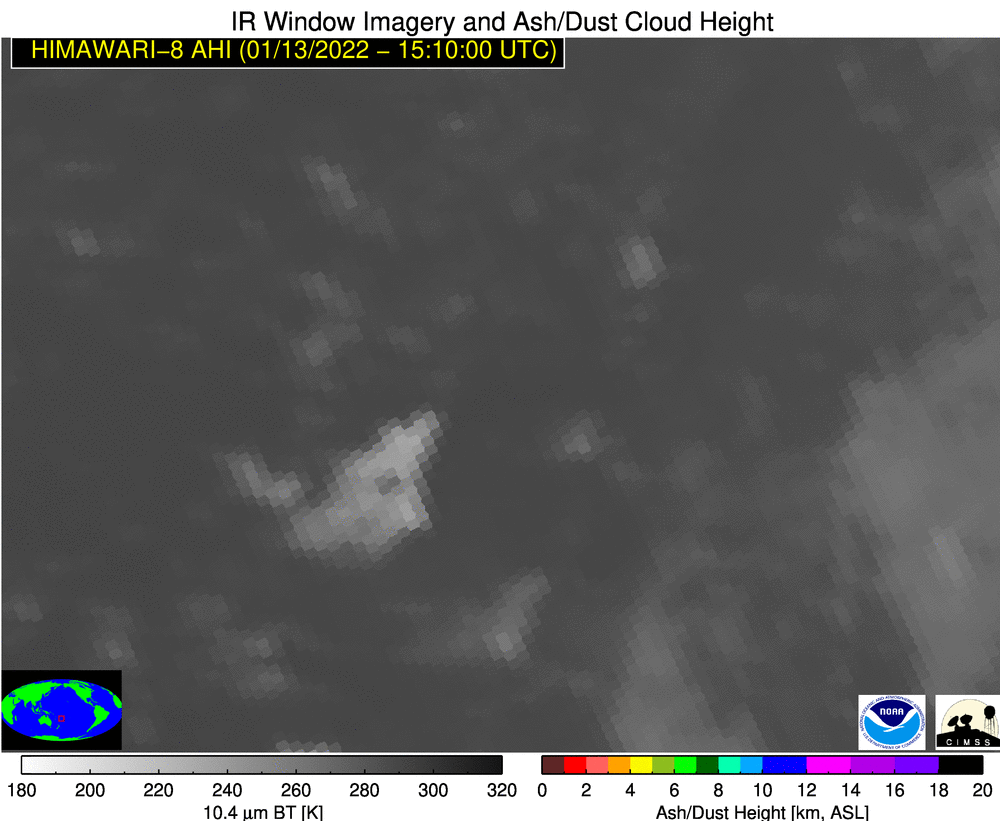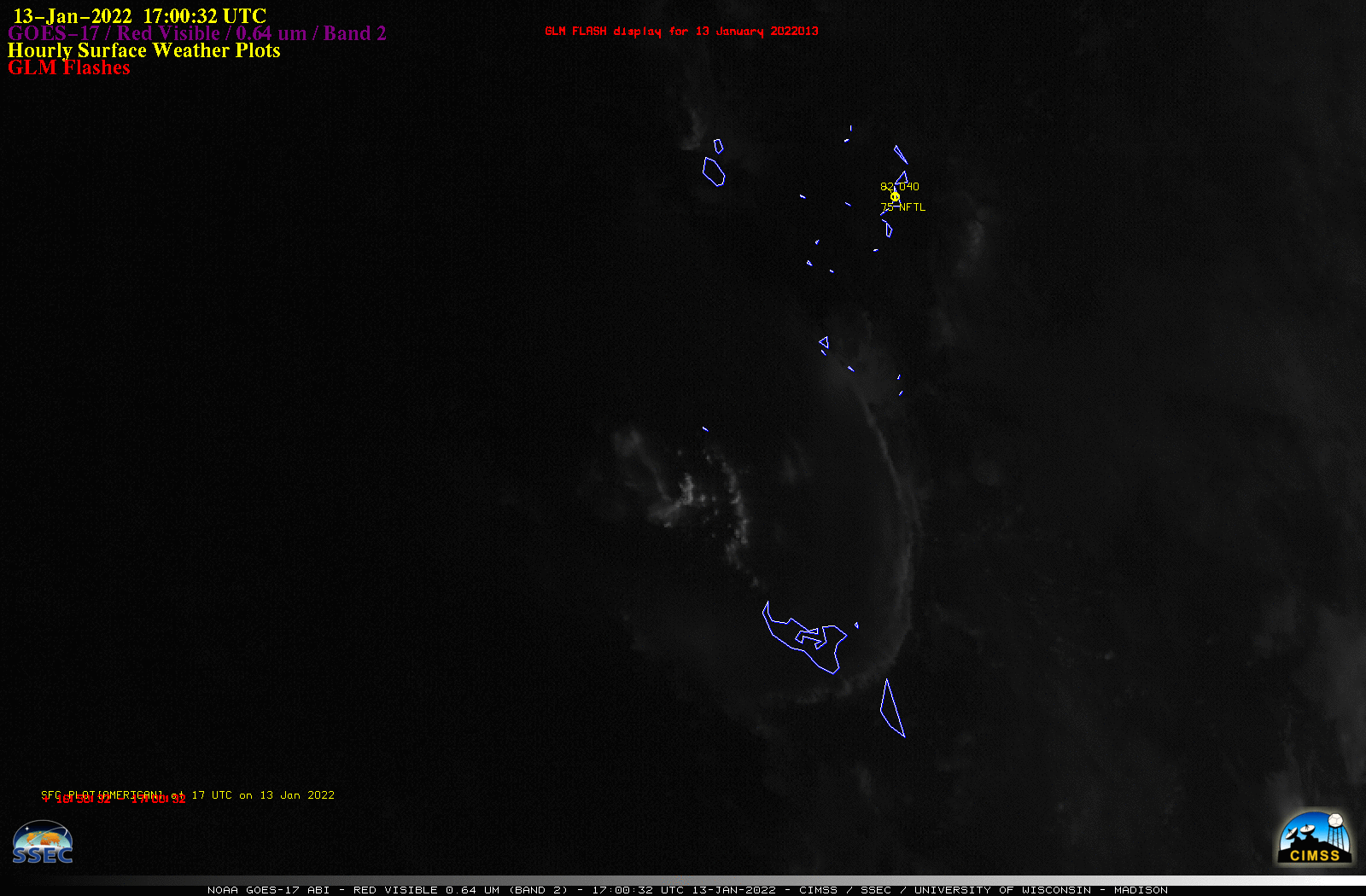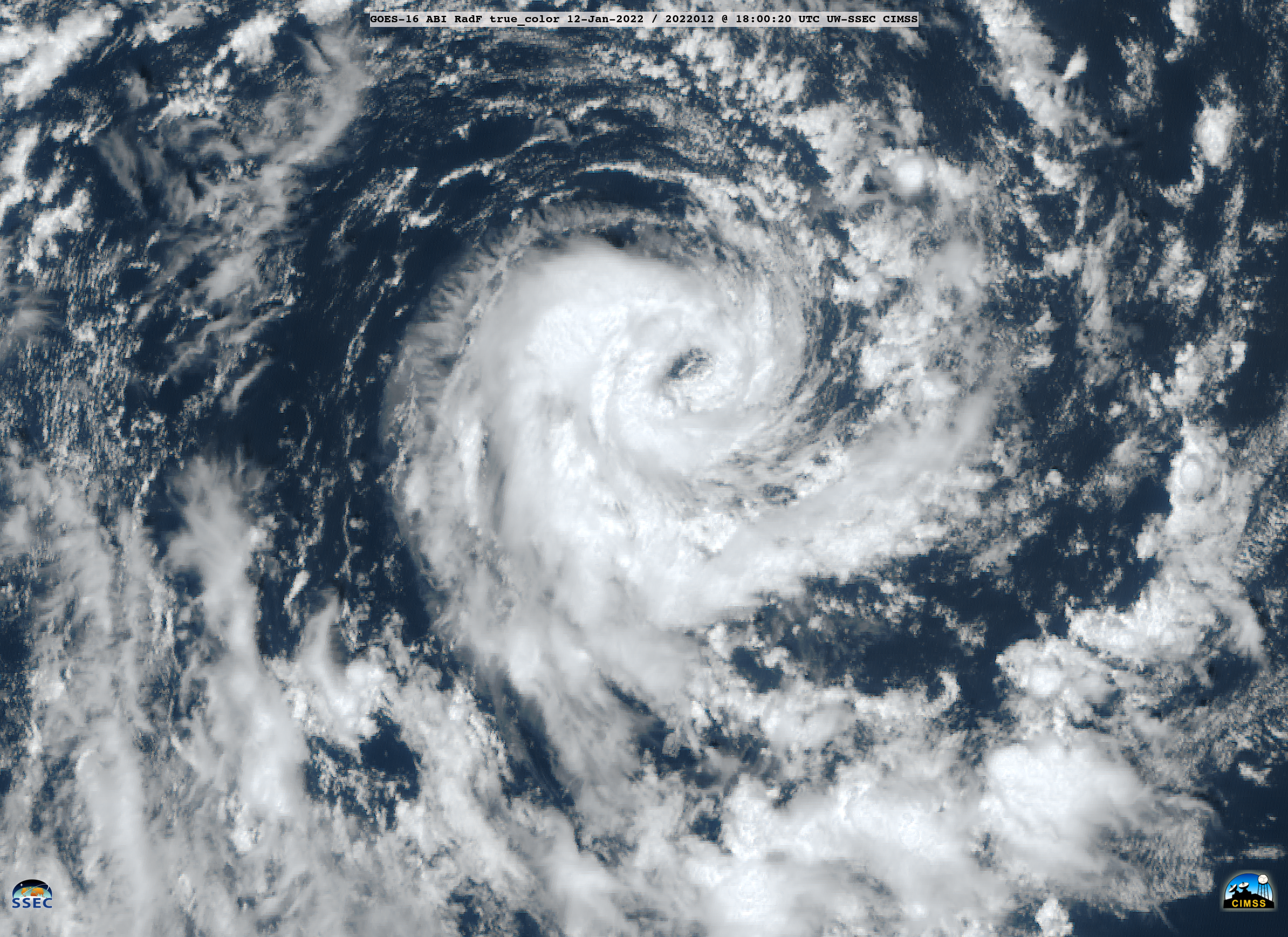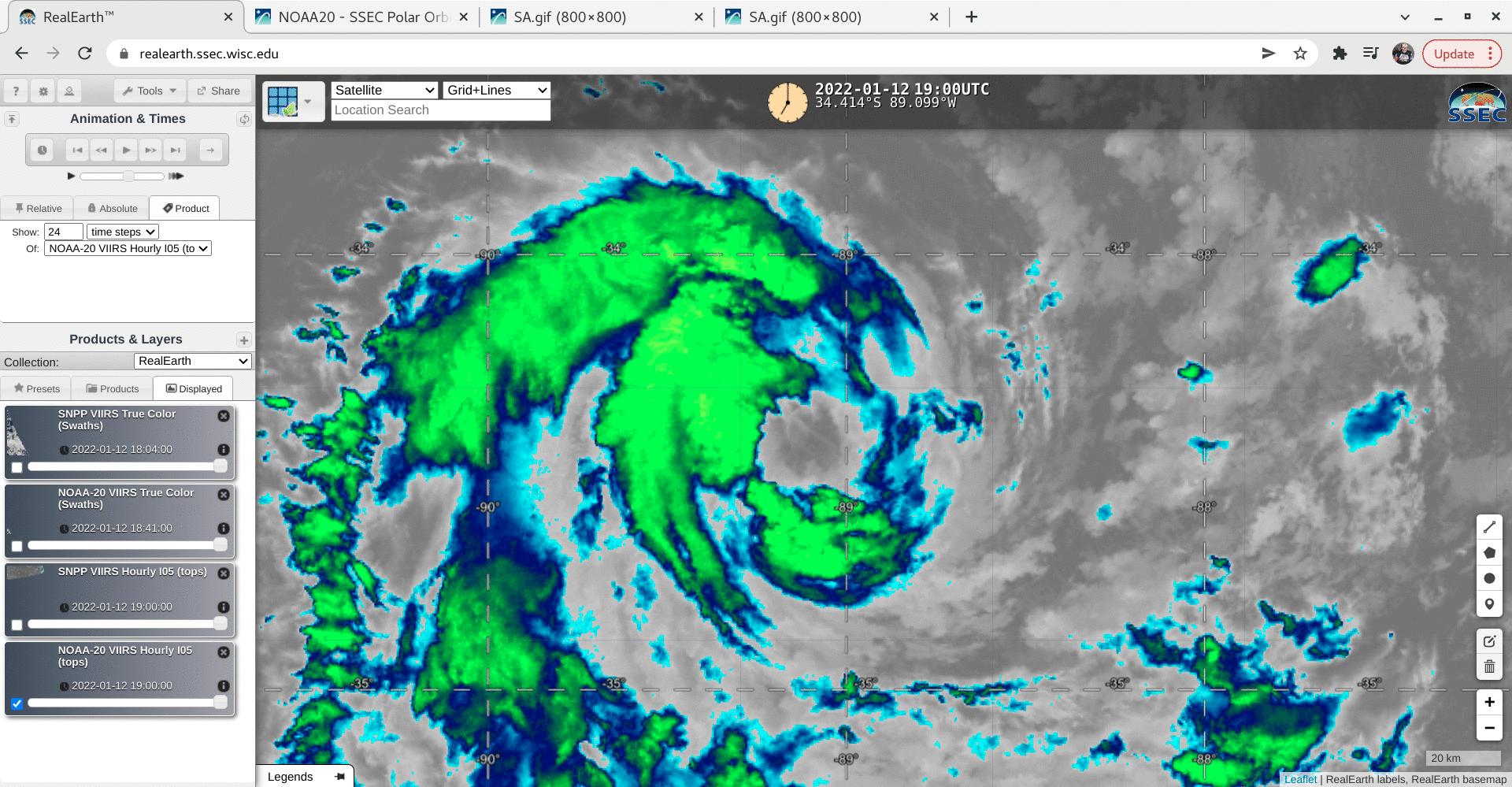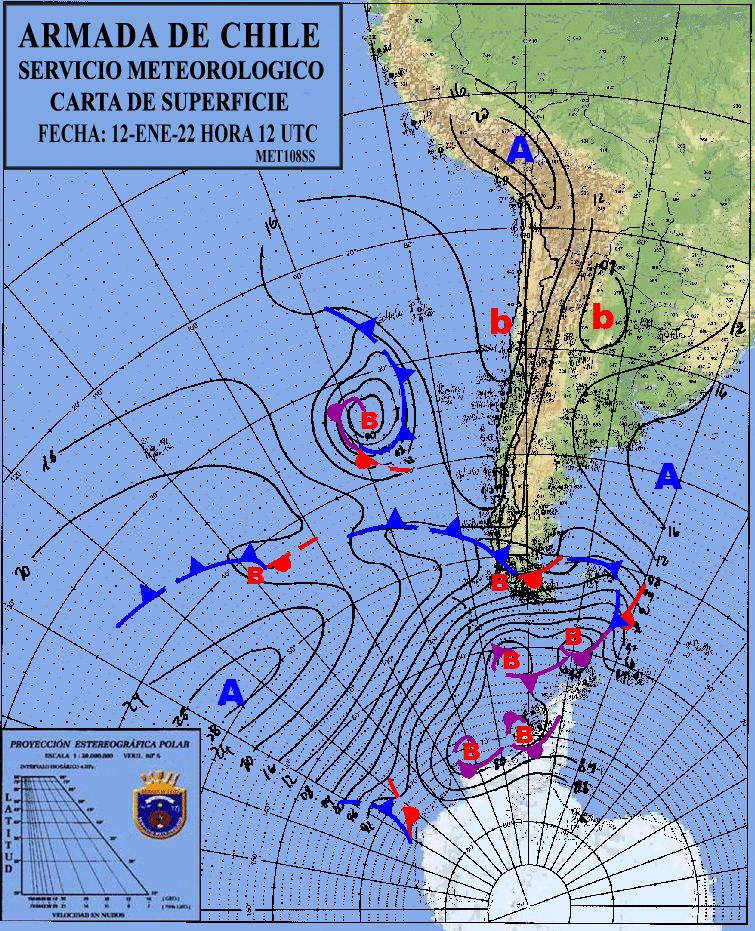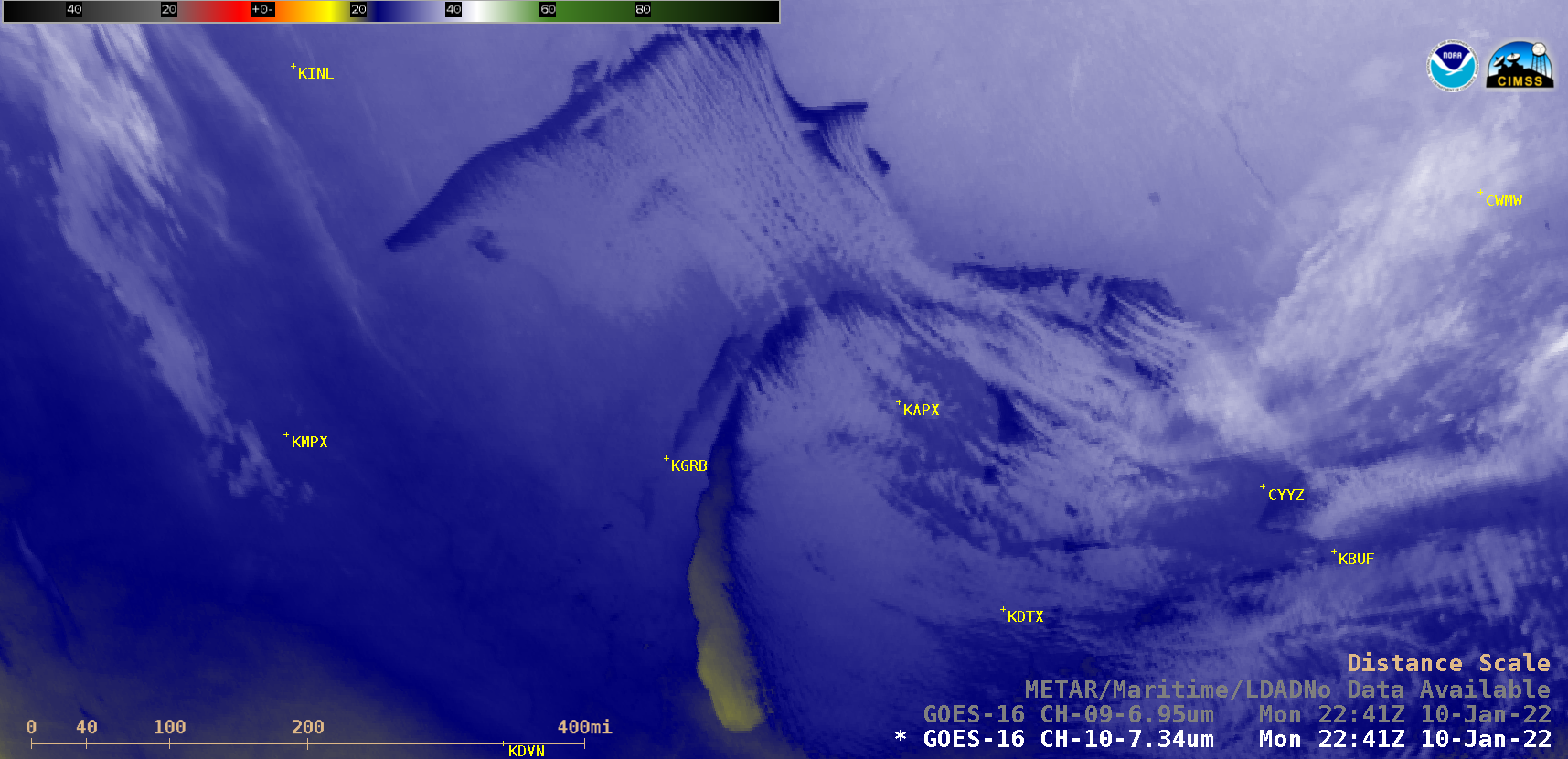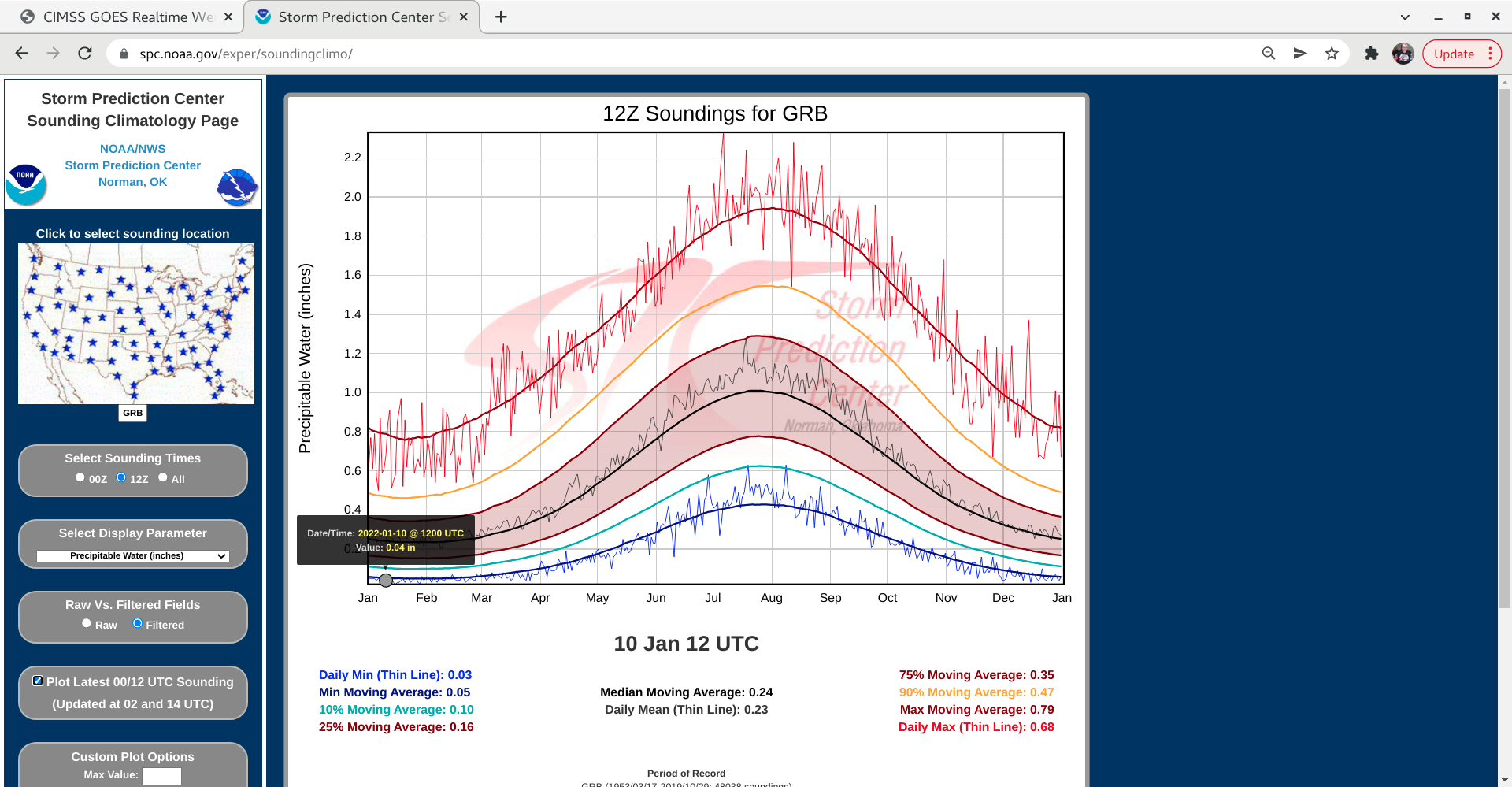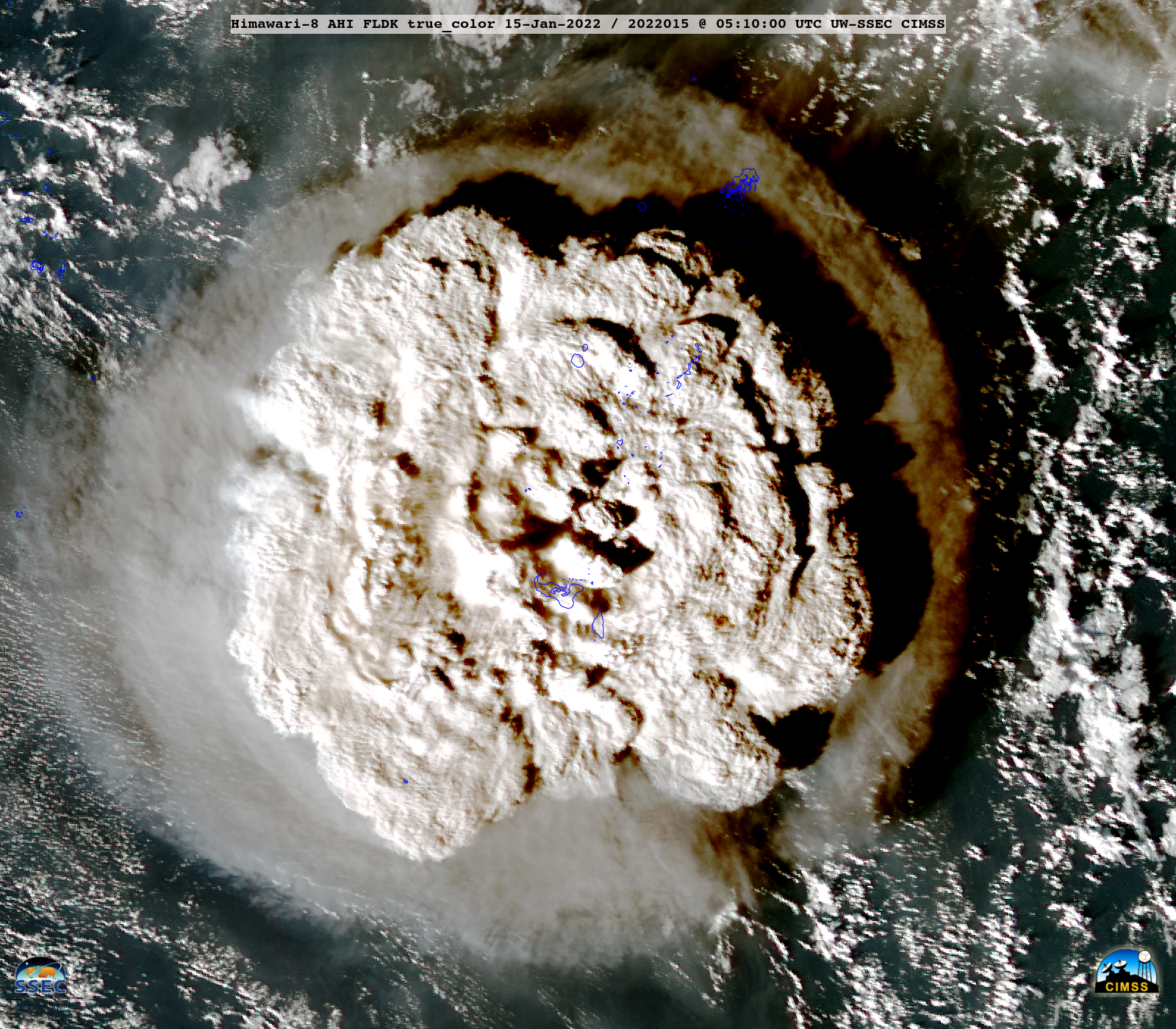
JMA Himawari-8 True Color RGB images [click to play animated GIF | MP4]
JMA Himawari-8 True Color RGB images created using Geo2Grid (above) showed the rapid expansion of a volcanic cloud following an explosive eruption of Hunga Tonga–Hunga Ha`apai on 15 January 2022. An abrupt shock wave was also evident, which propagated radially outward in all directions.
The volcanic cloud also exhibited a striking appearance in GOES-17 (GOES-West) “Clean” Infrared Window (10.35 µm) images (below), with a pronounced arc of cloud-top gravity waves along its eastern edge as the bulk of the cloud material drifted westward. Pulsing concentric shock waves were also seen in the infrared imagery.

GOES-17 “Clean” Infrared Window (10.35 µm) images (credit: Tim Schmit, NOAA/NESDIS/ASPB) [click to play animated GIF | MP4]
The explosive nature of the eruption could be seen by examining 10-minute GOES-17 Visible and Infrared images during the first 30 minutes (below) — only 20 minutes after the 0400 UTC eruption onset, the infrared cloud-top brightness temperature had already cooled to -100ºC (placing it in the lower stratosphere).

GOES-17 “Red” Visible (0.64 µm, left) and “Clean” Infrared Window (10.35 µm, right) images [click to play animated GIF | MP4]
Beginning at 0705 UTC, a GOES-17 Mesoscale Domain Sector was positioned over the region, providing imagery at 1-minute intervals — Infrared images during the period 0705-1200 UTC are shown below. The crescent-shaped area of “bow shock wave” ripples persisted, due to the robust and dense volcanic cloud acting as an obstacle to the easterly winds within the stratosphere. The 1-minute imaging was also able to capture the brief pulse of an overshooting top which exhibited an infrared brightness temperature of -105.18ºC at 0841 UTC (zoomed-in animation: GIF | MP4) — which could be a record cold cloud-top temperature, as sensed from a geostationary satellite (see this blog post).
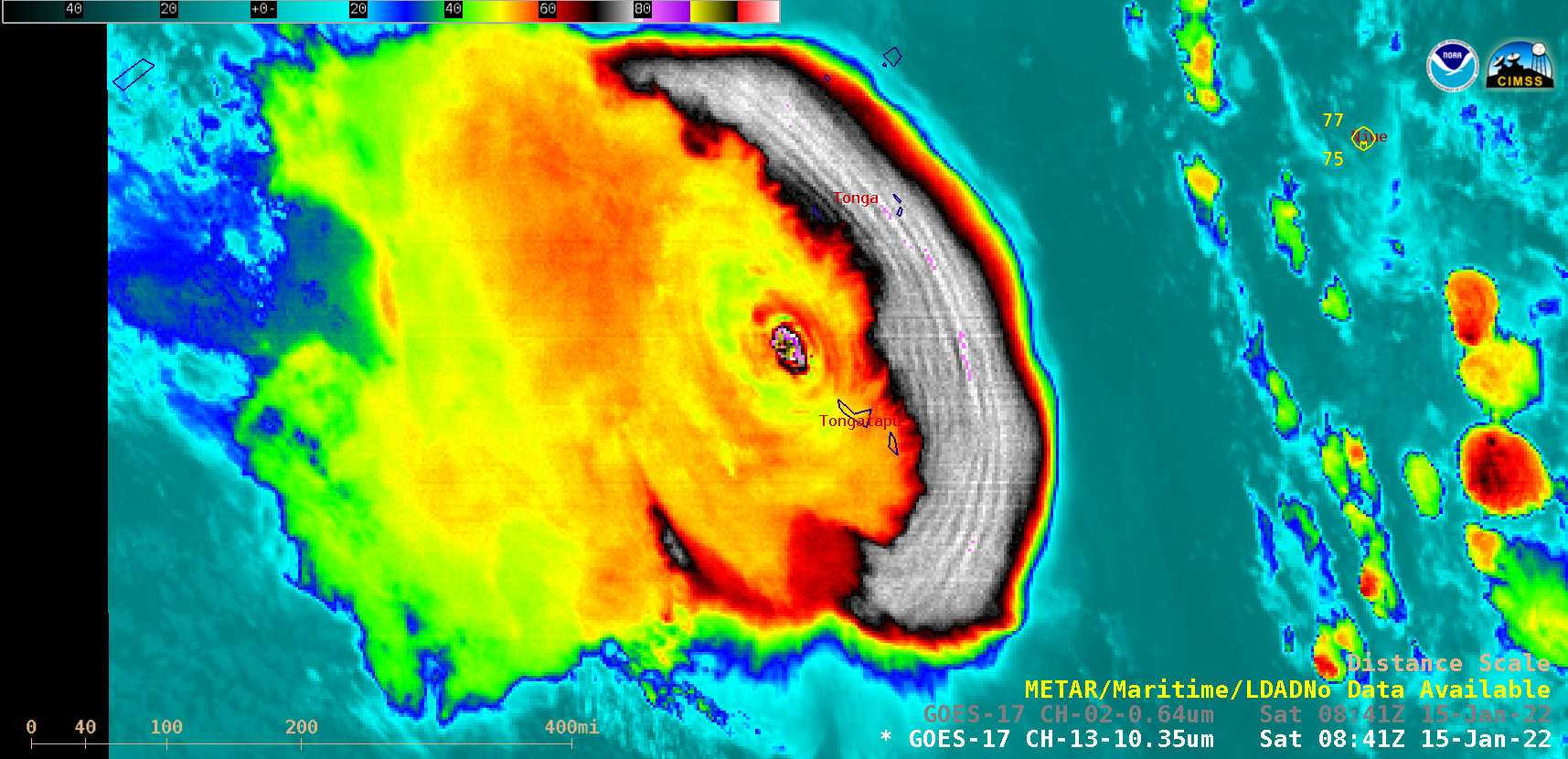
GOES-17 “Clean” Infrared Window (10.35 µm) images [click to play animated GIF | MP4]
A plot of 1-minute GOES-17 overshooting top infrared brightness temperatures (IRBTs) along with 10-minute Full Disk GOES-17 and Himawari-8 IRBTs (below) showed that the brief cold 0841 UTC overshooting top (and its rapid collapse) occurred between the times of routine 10-minute Full Disk scans — highlighting the value of rapid scan 1-minute imagery.

Plot of 1-minute GOES-17 overshooting top infrared brightness temperatures (IRBTs), along with 10-minute Full Disk GOES-17 and Himawari-8 IRBTs [click to enlarge]
VIIRS Infrared Window (11.45 µm) images from NOAA-20 and Suomi-NPP, viewed using RealEarth (below), also showed the region of cloud-top gravity waves (with minimal parallax compared to GOES-17) .
Satellite-based lidar and limb sounder data indicated that the volcanic cloud reached maximum altitudes around 30-32 km — well into the lower stratosphere, where easterly winds existed according to 00 UTC rawinsonde data from Nandi, Fiji (above). The westward drift of most of the volcanic cloud as seen in a Suomi-NPP VIIRS Day/Night Band (0.7 µm) image (below) lined up well with wind barbs at 30 hPa (an altitude of 23.78 km on the Nandi NFFN sounding).
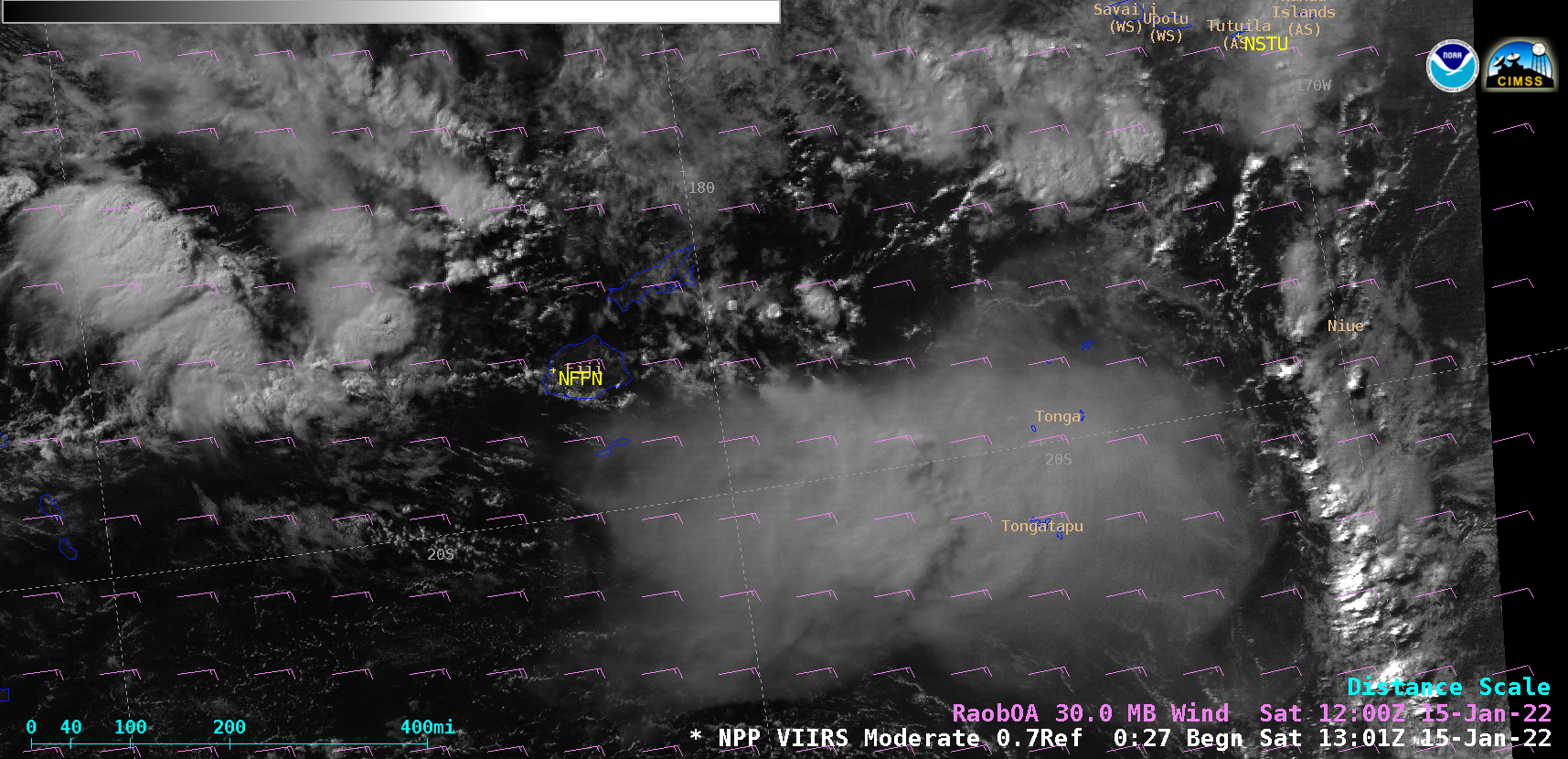
Suomi-NPP VIIRS Day/Night Band (0.7 µm) image, with 30 hPa wind barbs plotted in violet and rawinsonde sites plotted in yellow [click to enlarge]
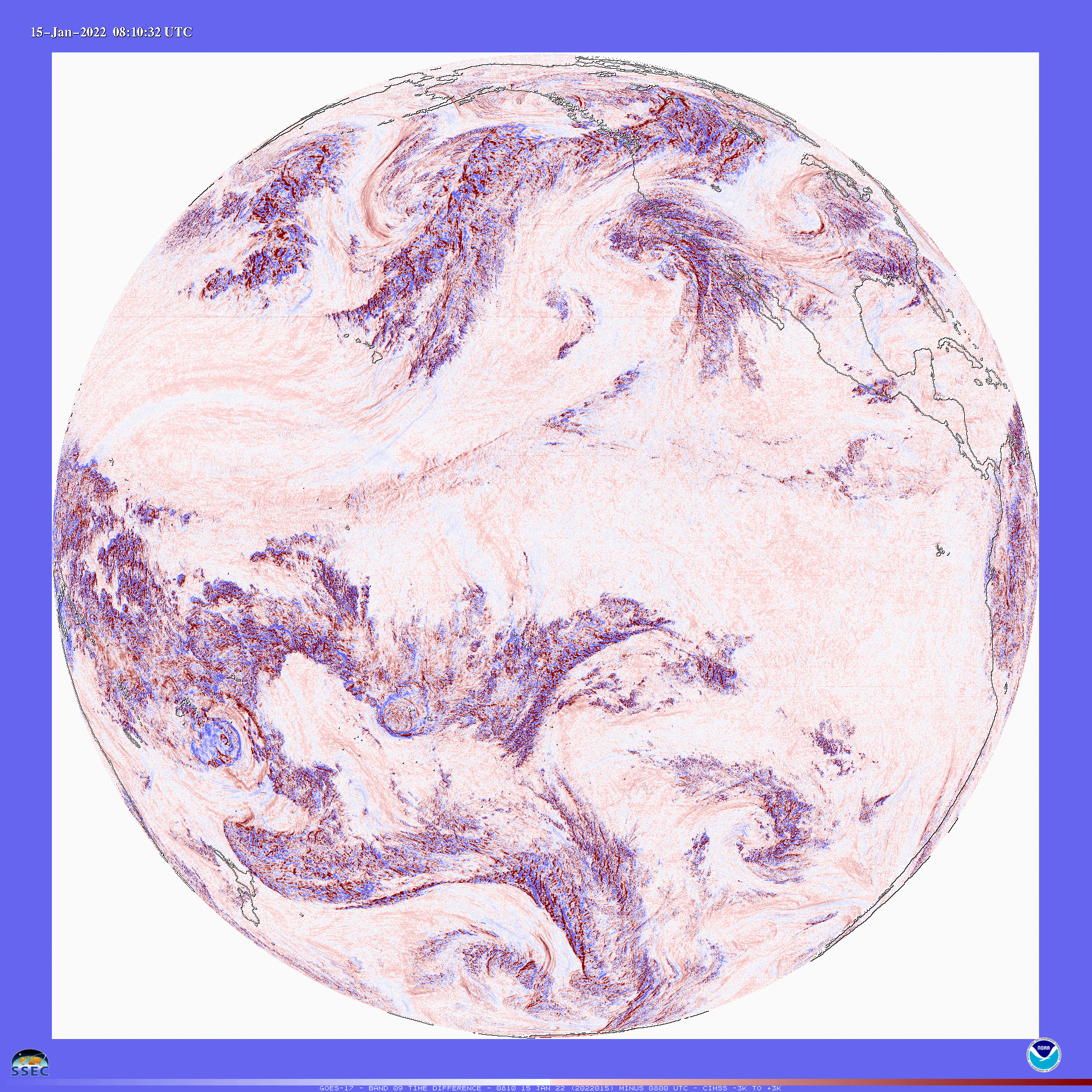
GOES-17 Mid-level Water Vapor (6.9 µm) Time Difference images (credit: Tim Schmit, NOAA/NESDIS/ASPB) [click to play animated GIF | MP4]
Propagation of the volcanic shock wave across the Pacific Ocean could be followed in GOES-17 (GOES-West) Mid-level Water Vapor (6.9 µm) Time Difference images (above). As the shock wave continued to propagate farther eastward across North/South America and then the Atlantic Ocean, the wave front could be seen in GOES-16 (GOES-East) Water Vapor Time Difference images (below). As the shock wave moved across southern Wisconsin, a brief rise/fall couplet in surface air pressure just prior to 1500 UTC (9:00 am CDT) was evident in plots from the University of Wisconsin – Madison’s Atmospheric, Oceanic and Space Sciences building rooftop tower (as well as the personal weather station of the author of this blog post).
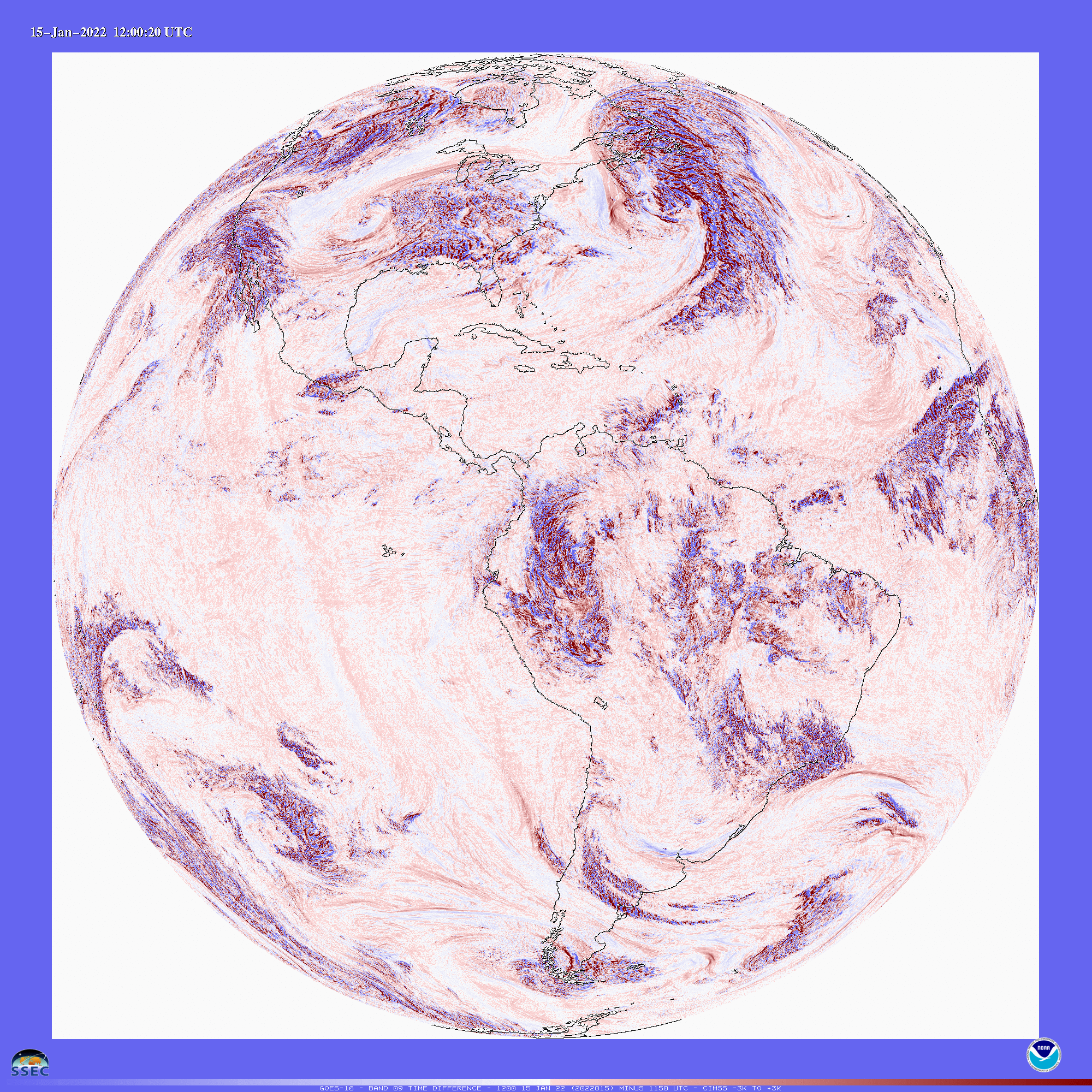
GOES-16 Mid-level Water Vapor (6.9 µm) Time Difference images (credit: Tim Schmit, NOAA/NESDIS/ASPB) [click to play animated GIF | MP4]
GOES-17 and Himawari-8 visible imagery can be combined to create stereoscopic imagery of the eruption, as shown below.
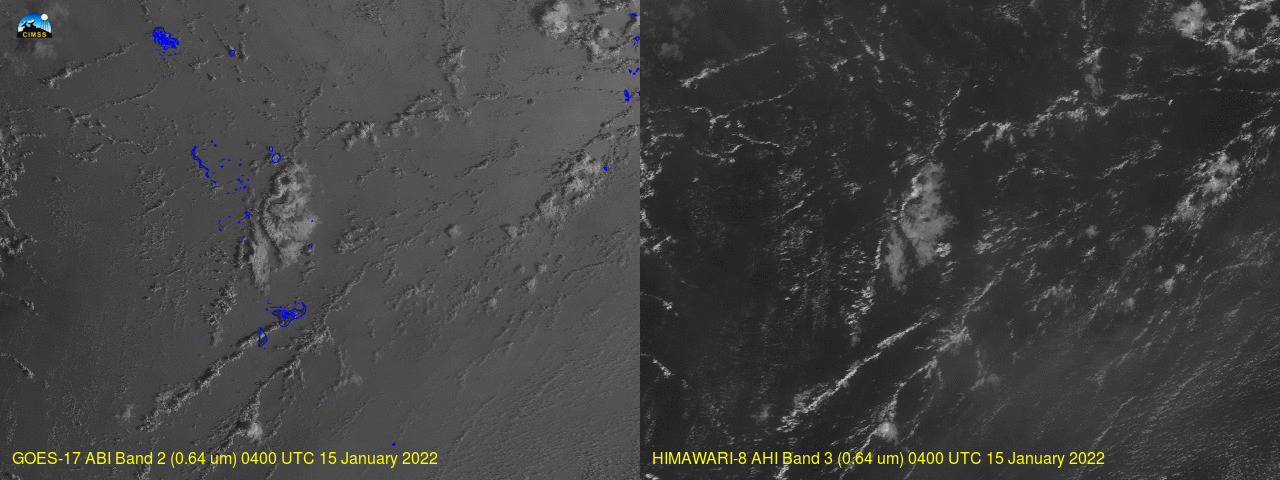
View only this post Read Less




